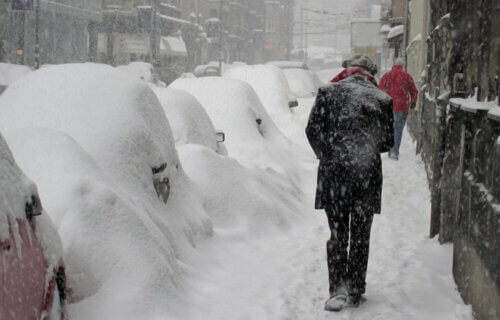CAMBRIDGE, Mass. — Since late 2020, the northeastern region of Japan’s Noto Peninsula has been shaken by a relentless barrage of earthquakes, occurring at an astonishing rate 10 times higher than the area’s average. These tremors, originating from depths of up to 15 kilometers, have left scientists scratching their heads about the cause of this unusual seismic activity. Now, a team of researchers led by Qing-Yu Wang from the Massachusetts Institute of Technology has proposed a surprising culprit: heavy rainfall and snowfall.
At first glance, the idea that the weather could influence earthquakes may seem far-fetched. After all, earthquakes are typically associated with the movement of tectonic plates and the buildup of stress in the Earth’s crust. However, the study, published in Science Advances, offers compelling evidence that suggests the weight of water from rain and snow could be the straw that breaks the camel’s back, tipping the delicate balance of stress in the subsurface and triggering earthquakes.
The team arrived at this startling conclusion after analyzing over a decade’s worth of seismic data from beneath the Noto Peninsula. By carefully measuring the speed of seismic waves traveling through the Earth’s crust, they were able to detect subtle changes in the properties of the rock over time. Surprisingly, they found that the seismic waves consistently slowed down during the winter months and sped back up in the summer.
Intrigued by this seasonal pattern, the researchers set out to investigate whether it could be related to the weight of snow and rain pressing down on the land surface. To test this hypothesis, they created a sophisticated 3D computer model that simulated how the pressure of fluids in the pores and fractures of the rock would change in response to these seasonal environmental forces.
The model revealed a striking correlation: the seismic waves were indeed highly sensitive to changes in pore pressure, slowing down as the pressure increased each winter under the weight of heavy snow and rainfall. This finding suggests that the often-overlooked influence of surface processes like precipitation could play a significant role in triggering earthquakes.

But the story doesn’t end there. The researchers also noticed a puzzling long-term trend in the seismic data: in the years leading up to the earthquake swarm, the seismic waves were gradually speeding up, suggesting that the rocks were becoming increasingly compressed. Then, just before the swarm began in late 2020, the wave speeds suddenly decreased.
To unravel this mystery, the team turned to GPS data, which can detect minute movements of the land surface. They found that the period of increasing seismic wave speeds corresponded with a subtle sinking of the ground surface, while the abrupt slowdown in late 2020 matched up with a distinct uplift.
The researchers propose that these changes in ground level and seismic wave speed could be caused by the movement of fluids deep within the crust. They suggest that in the years before the swarm, fluids were gradually draining away from the region, allowing the rock to compact and the ground to subside. But in late 2020, something triggered an influx of high-pressure fluids, possibly from a deeper reservoir, causing the rock to expand and the ground to uplift.
Remarkably, the heavy snowfall in the winter of 2020 may have been the trigger that unleashed this chain of events. The researchers believe that the additional weight of the snow increased the pore pressure in the subsurface just enough to destabilize the delicate balance of stress on deep faults, allowing high-pressure fluids to infiltrate and ultimately triggering the earthquake swarm.
This groundbreaking study paints a fascinating picture of the complex web of factors that can influence earthquake activity, from the weight of rain and snow on the surface to the movement of fluids kilometers underground. It also raises intriguing questions about the potential impact of climate change on seismic hazards. As global temperatures rise and precipitation patterns shift, could we see more earthquake swarms like the one in Noto Peninsula?
